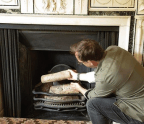37 CAMERA RAW TIPS


01 CLEVER AUTO SETTINGS
The Auto button at the top of the Basic Panel (Cmd/Ctrl+U) can be a great way to kick-start your image editing: it employs machine learning to intelligently correct your photo by comparing it to thousands of other similar images. What’s more, you can apply auto settings to individual tonal sliders in the Basic Panel by holding Shift and double-clicking on the slider, or auto-correct Temperature or Tint in the same way.

02 LEARN CURVES
The Curve is the most powerful tonal tool in Camera Raw, yet it can be tricky to master. To get a better idea of how it works, grab the Target Tool from above the curve box, then drag left or right over part of the image. Points will appear along the curve line (shadows on the left, highlights on the right) that show how the line lets you intuitively affect the brightness of different parts of the tonal range.
03 CUSTOMIZE YOUR PANELS
Right-click over any panel name for three panel mode options. Multiple Panel Mode lets you open as many panels as you like. Single Panel Mode auto-collapses other panels when you open another. Responsive Panel Mode will auto-close panels if they don’t fit within the interface. You can also change the order of panels
You’re reading a preview, subscribe to read more.
Start your free 30 days





